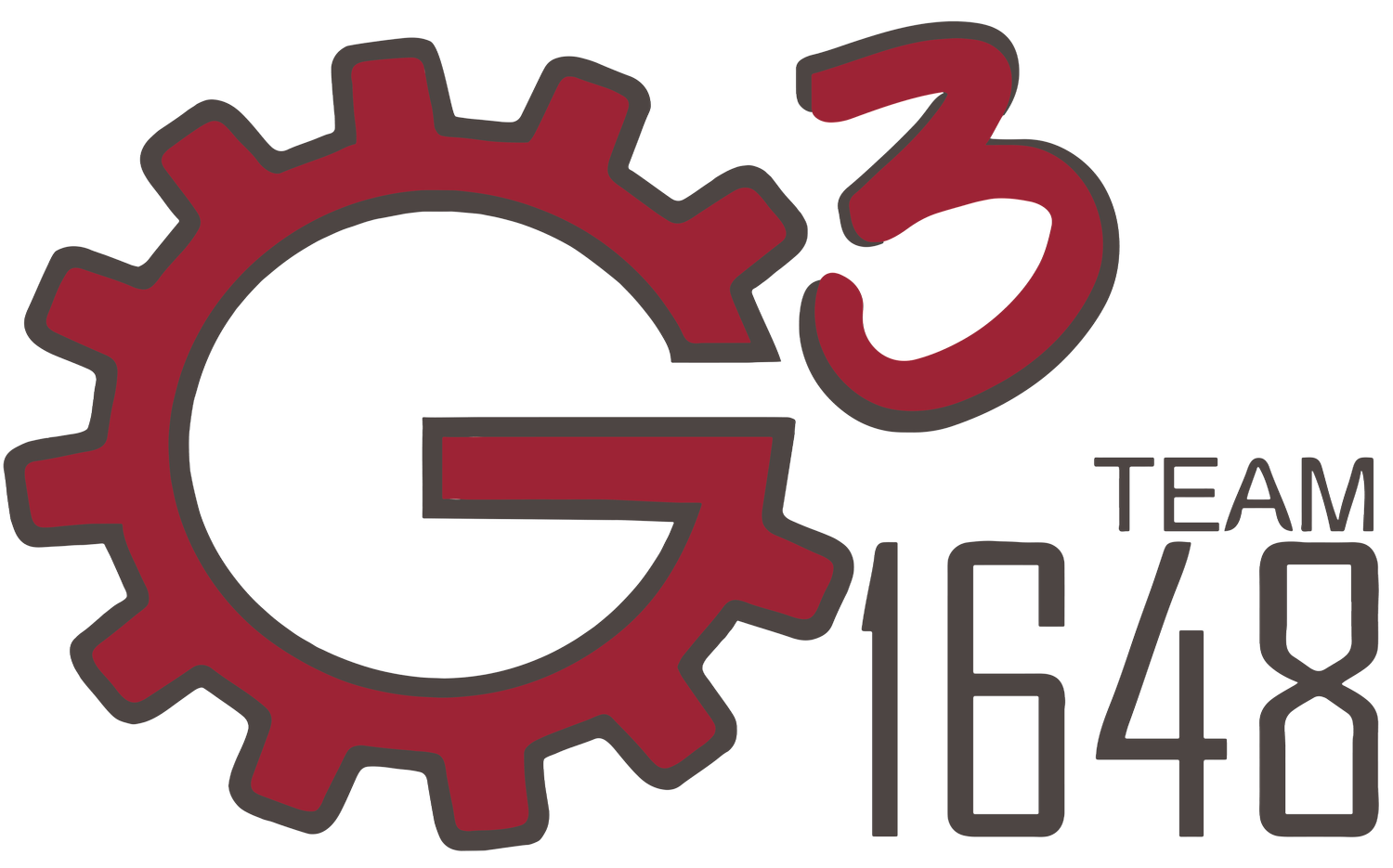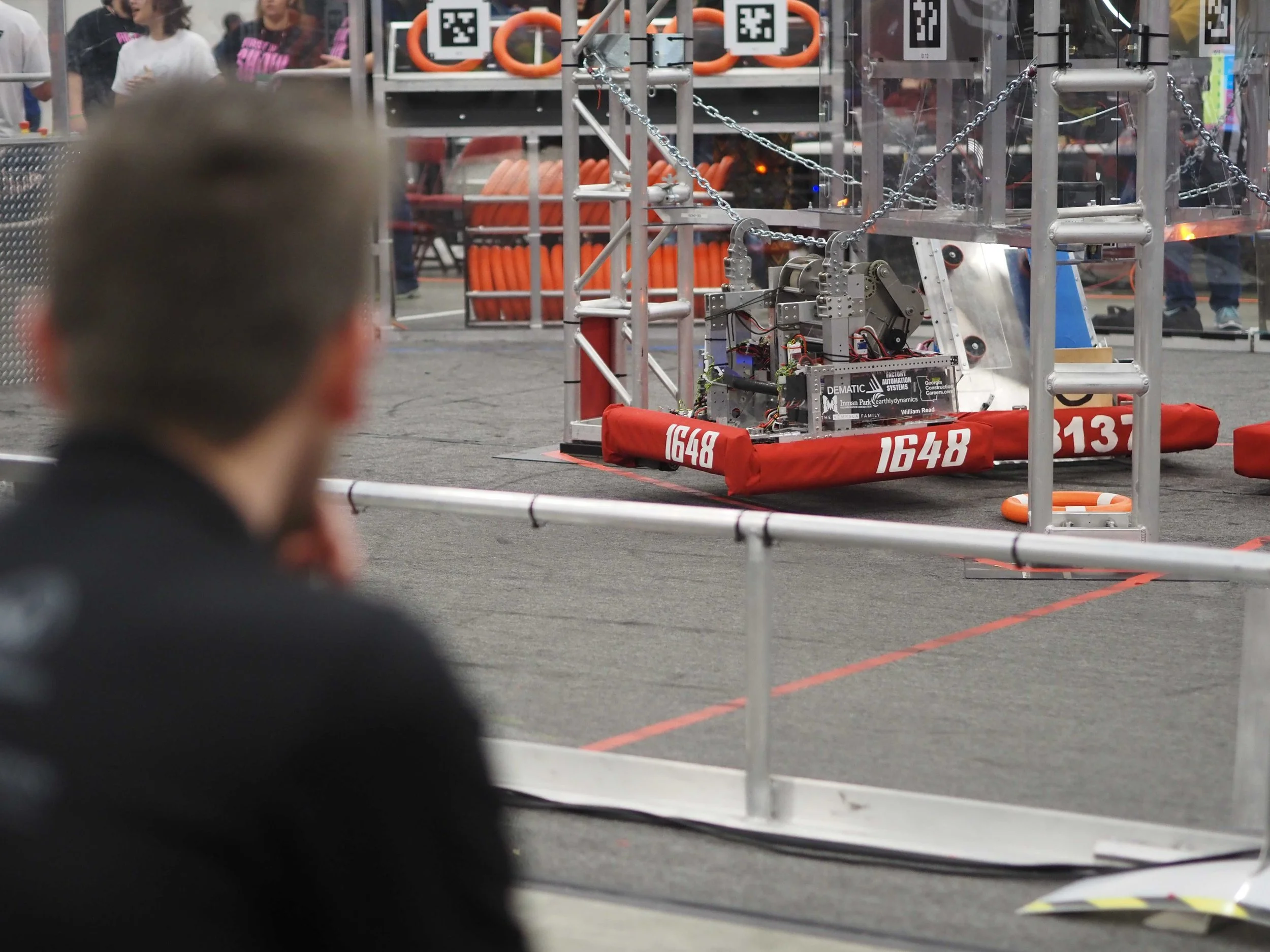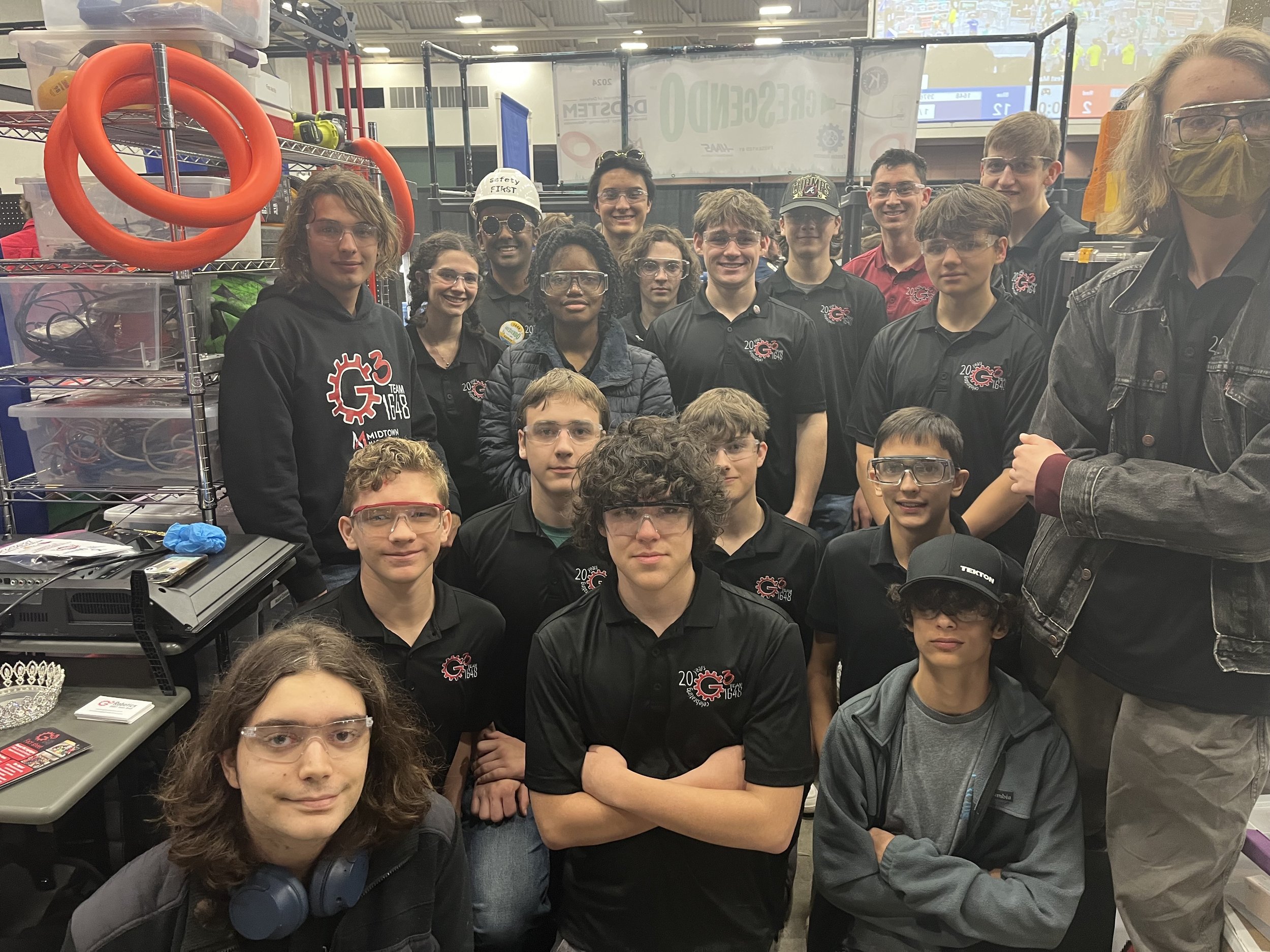Scouting is a competition activity you shouldn’t overlook if you’re on a robotics team like Midtown High School’s FRC Team 1648.
Essentially, scouting is about data. It’s the way we take the measure of other teams’ robots and compare those to our own. At competition, G3 assigns team members to scout other robots. We track how well the robot does - and what it does - during its matches.
At the district qualifier in Anderson, G3’s lead scout was Gavin Horn.
Photo by Russell McIntosh; Scouts in image: Gavin Horn, Lila Duke, Rohan Reddy, Grant Russel, Luca Geissler-Norseng, Judge Dutton, Will Dwyer, Riley Parker, Charlie Hoch, Jack Richardson, Jack Manley, Woodward Spivey, Marcus Stubin, Esan Ebner, Asher Smith, Zorah Reese, Noah Trotz
Then, we use what we learn to come up with a strategy for qualification matches. We can also use this knowledge to create a “pick list” of teams we would like to join in an alliance.
Our team has an electronic form that we fill out in real time, both in the pit and during matches. In either area, G3 scouts keep their focus on the competition. The best scouts can work with the drive team to help the team interpret what they are seeing so that our strategies are stronger.
Image: Common form used by many teams for all information collected during matches.
At the district qualifiers in Anderson, the drive team included: Roxanna Read, Lela Mariolis, and Allister Belle
Photo by Russell McIntosh; Image: Drive team on the right is scoring a note into the speaker.
Some of the details that most teams track are these:
Capabilities of the robot
Starting position of the team
Scoring abilities
Defense abilities
Though every team’s scouting sheet is different, most teams want the same thing: to predict what could happen in the playoffs. This includes:
Predicting the alliances the team may face
Considering the robots that would be good in an alliance
A ranking list created by the scouts and drive team
A few lucky teams get to be alliance captains. These teams get to pick who will be on their alliance from the rest of the competing teams. The competing teams want to stand out on other teams’ pick lists in order to get picked by better-fitting teams. The captains typically look for other teams with skills that they lack or with consistency in their area of focus. This allows them to form the best alliance possible with the available teams to choose from, and the best possible alliance is determined from scouting.




